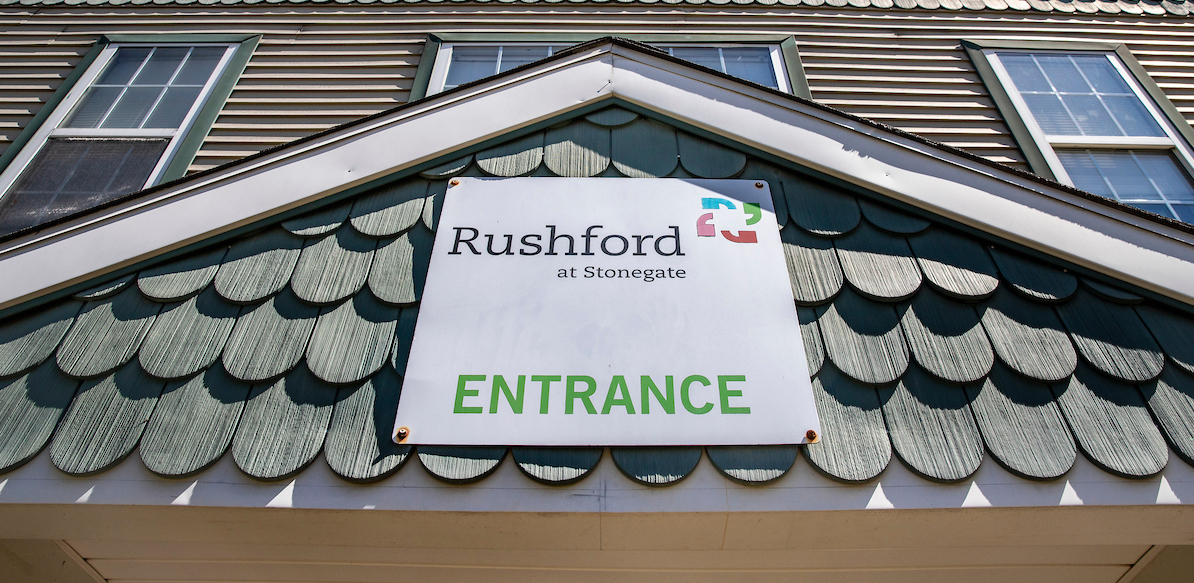If you drive Route 68 through Durham and aren’t paying attention, you’ll miss the entrance for Rushford Academy, and Rushford at Stonegate. A winding driveway leads to a tiny campus that includes a school building, a gymnasium and a ropes course. A tiny campus in the middle of nowhere, doing big things for children in recovery.
“We are a small family here,” says Billy Arline, Program Operations Manager of Rushford Academy and Rushford at Stonegate, “and while considering boundaries, we establish some really close relationships. That’s what we really emphasize.”
This “family” runs one of the few residential treatment centers for young men who suffer with substance abuse. What makes this place so special? The clients are not just Connecticut residents, but come from all over the area, including Maine, Pennsylvania and New York.
“Every young person comes here with their own story, but I think that’s what makes this program so successful,” says Arline. “You have a kid from New Hampshire, and their story, their environment is different than that of a kid from Bridgeport. But there are also some similarities, and here, they can find commonalities and support through each other.”
The campus is home to two programs. Rushford at Stonegate is a 28-day treatment plan. Rushford Academy runs between four and six months.
The clients range from 13 to 17 years old. To be part of such intensive programs means these young people weren’t just experimenting with alcohol or marijuana in high school. According to Arline, many were abusing more extreme drugs, at a very young age.
“We are talking about heroin overdoses, children who were narcanned several times,” he says. “Those are the youth we see most frequently. Our kids are starting at 8, 9 years old. In some cases parents aren’t doing a great job of protecting their prescription medications. So now kids are trying OxyContin or Percocet. Xanax is huge now. It’s scary.”
In both programs, maintaining clients’ education is as important as maintaining their sobriety. Academy students attend a full day of classes, while those in the Stonegate program have tutoring sessions two hours a day. Arline says even the tutoring makes a big impact on their studies.
“We are going to make sure they don’t fall behind in school,” says Arline, “because we don’t want them to have an additional stressor when they leave, that can lead to a relapse in substance use. So evening hours we are working with them, tutoring them and making sure they have periods throughout the day that they can get their school work done.
“Upon leaving here, in most cases, they are in a better position than when they came in, because they weren’t going to school anyway. Or they were going to school high.”
This commitment to both treatment and education meant that throughout the pandemic, the doors had to stay open.
“It’s safer for our clients to be here than in the community,” says Arline. “Just because of the unique population we serve, to say, ‘We are shutting down, we know you have a particular issue with Xanax or heroin, but you kind of need to go home because of COVID,’ would put them at significant jeopardy, and possibly overdose or death. So it really wasn’t an option for us to shut down.”
Though some patients need to return to treatment after discharge, Arline says it can be part of the process.
“A lot of our youth who come back to the program,” he says, “are often our most successful clients. They are reaching back out to us two or three years later. They graduated, they have a job, are married, asking to come back and speak to our youth, and in many cases it’s the people who have gone through our Stonegate program maybe two or three times over an 18-month period.”


